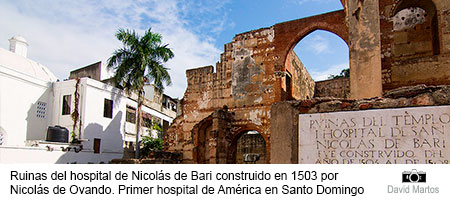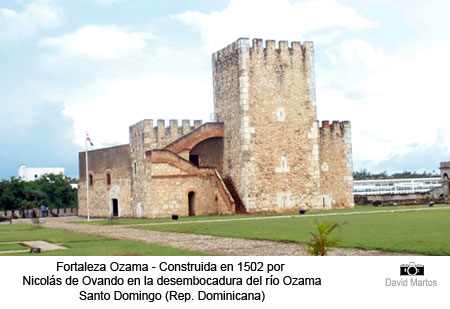Frey Nicolás de Ovando arrive in Santo Domingo in 1502 with the very clear orders of the Catholic Monarchs of what their government would be in the Indies. They can be summarized in two points: putting order in the administration, after the disastrous management of the brothers Columbus and Francisco de Bobadilla, and in the exploitation of the natural resources of the island Hispaniola and, something that would be a constant in the in the so-called Spanish American Empire, the creation of cities and urban of Castilian style that favored the political and economic development of the island, as well as its military control.
With Ovando began the authentic process of colonization of the Indies by applying in it the legal and administrative systems that were already used in Castile and the rest of the Hispanic kingdoms. The following measures should be highlighted among others:
– Restoration of the crown tributes for gold mined. The crown asked for half of it at first but Ovando negotiated and finally it was the fifth part (the Quinto Real).
– Establishment of a bureaucratic administration that recorded and controlled everything that was done and occurred with the main purpose of keeping the Spanish kings informed.
– The Foundation of cities with the model of the Castilian municipality: reconstructed Santo Domingo, founded Puerto de Plata, Salvaleón, Santa Cruz, Puerto Real, Lares de Guahabá, Santa María de la Vera Paz among the most important. It is also worth mentioning its building impulse especially in Santo Domingo, where it distributed land among the Spaniards and built the first stone house, including its own and the first hospital (San Nicolás de Bari), convents, churches, shipyards and other public buildings where all the social, political and economic activity took place.
– The primitive land repartimento of Indians is replaced by the Encomienda in which the Indians, at the request of the kings, work for a living wage in exchange for being educated and evangelized. Although this system gave rise to abuses which were quickly denounced before the kings by the Spanish religious and which led to strong legislative measures for the protection of the Native American ( testament of Queen Isabel, Laws of Burgos of 1512, New Laws of Indias of 1542 and other). Despite all the legislative efforts of the Spanish monarchs to protect the natives, it was impossible for them to control the ill-treatment and abuse to which they were subjected by some landowners and commanding officers.
– It promoted the entry of vessels and thus international trade.
– Establishment of the Educational System led by Franciscan Fathers.

– During this government was created in Seville the Casa de Contratación, an organization that monopolizes commerce and represents Miguel de Pasamonte in Santo Domingo Miguel de Pasamonte, who acted as royal treasurer.
– Organization of new expeditions for explore and colonize Cuba, by Sebastián de Ocampo, and Isla de San Juan, by Ponce de León.
– He promoted agriculture introducing numerous European crops, notably sugar cane. He also introduced livestock importing from Spain pigs, cattle, horses and mules; and also reorganized the mining for which he created the royal gold foundries bringing to Spain technicians and material specialized in mineral exploitation.
– He pacified the island by defeating the rebellions in the chiefdoms of Xaragua and Higuey. This is the chapter for which Ovando has been accused of cruelty for the massacre he carried out in Xaragua against the most important chieftains of this chiefdom. They say that he deceived the natives by locking them in a Taino bohío and set it on fire, killing everyone inside. The famous chieftain Anacaona was captured and after a trial in Santo Domingo she was accused of conspiracy and hanged, as well as soon after Cotubanamá, chieftain of Higüey, who was also captured and hanged in Santo Domingo. These facts must be considered within the framework of military actions and the head of the enemy. This would be a habitual way of acting of the Spanish soldiers (quite inferior in number to the native armies): to go ahead of the events and attack directly to the chieftains or native chiefs, provoking the anarchy and the flight of the terrorized enemy when contemplating the defeat of their chiefs. He would do it Cortés con Moctezuma y Cuauhtemoc, and Pizarro con Atahualpa.
– He was the first importer of African slaves to America to use as labour. The kings tried to protect the Indians by preventing their enslavement because of their extremely fallen demographics, caused by disease, the new system of exploitation that was difficult for them to bear, the mixing with the Spaniards, the abrupt decline in births and the flight to the mountains that would make their fragile lifestyle even worse.
Nicolás de Ovando was replaced by Christopher Columbus’ son, Diego Colón, in 1509, which would burst many of the Commander’s achievements as we shall see later on.
